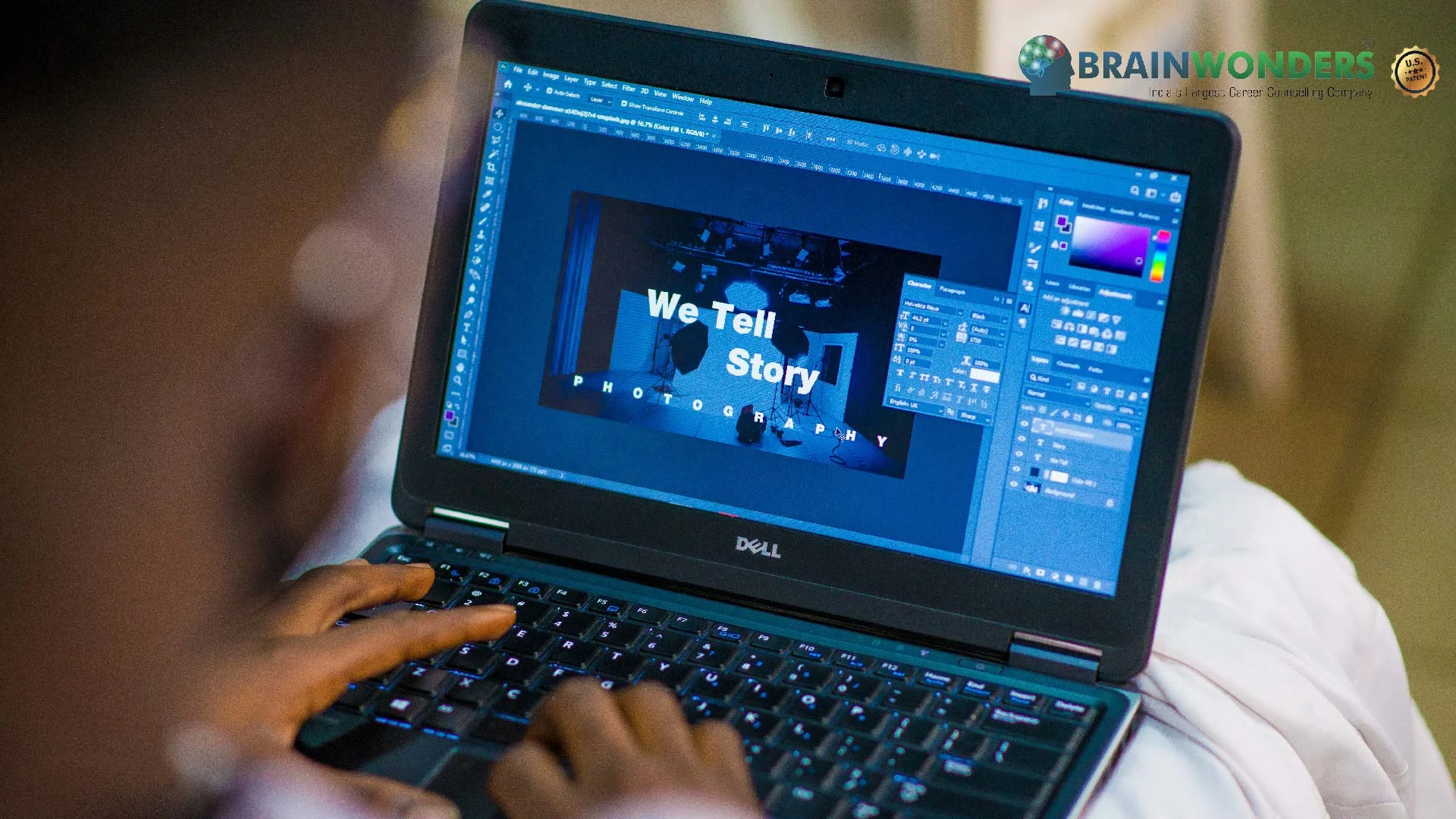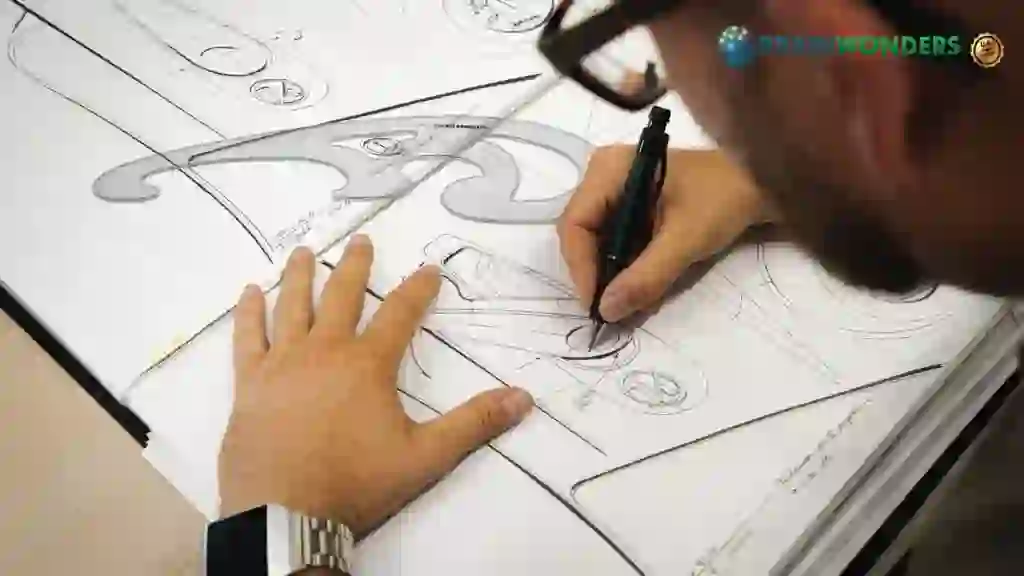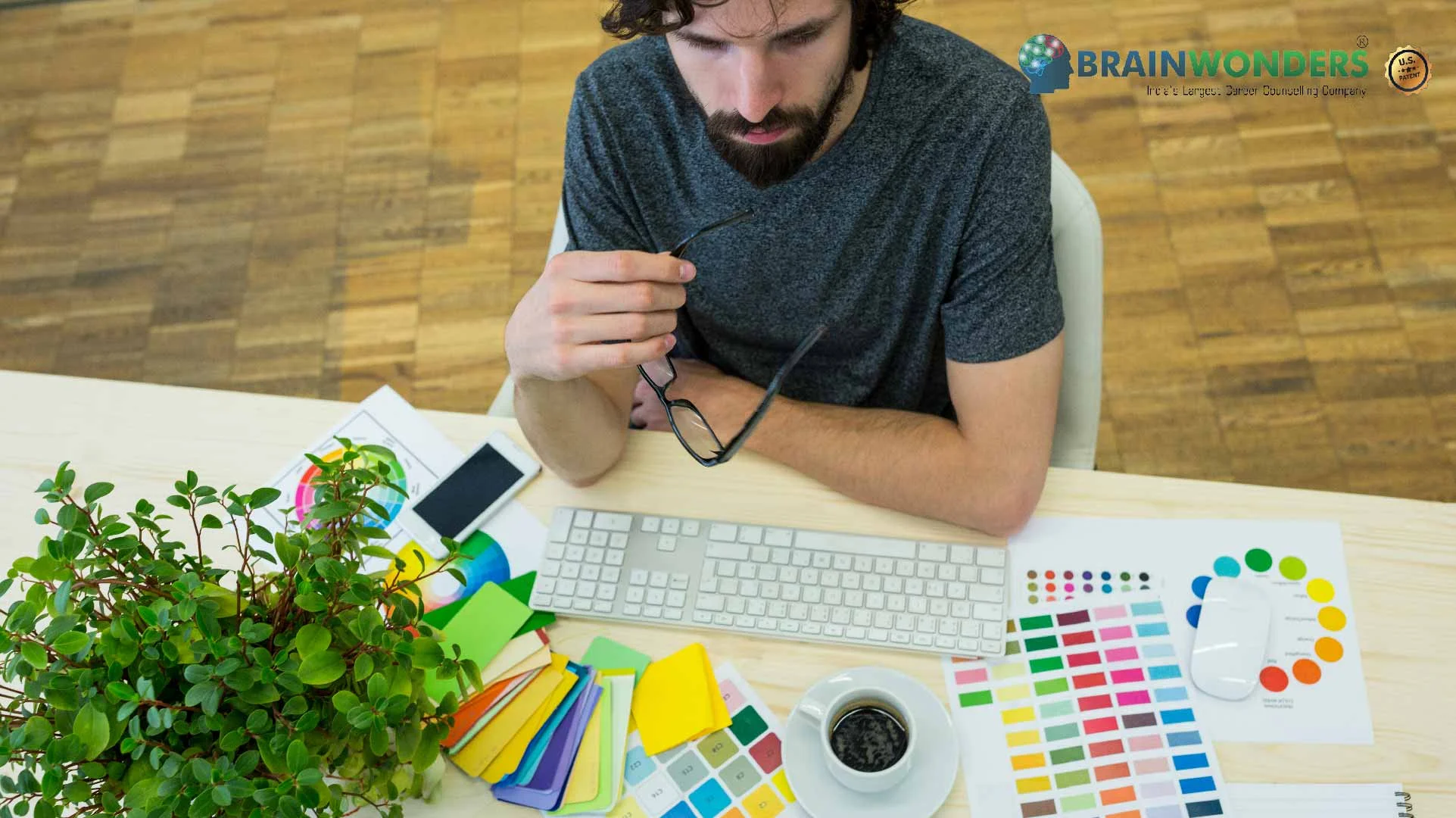How to become a Graphic & Communication Designer
Overview, Courses, Exam, Colleges, Pathways, Salary

Overview
Who is Graphic & Communication Designer ?
A Graphic & Communication Designer is a creative professional who combines artistic skills with effective communication strategies to convey messages and concepts visually. They work across various mediums, including print, digital, and multimedia, to create visually appealing designs that communicate effectively to a target audience. Graphic & Communication Designers collaborate with clients or creative teams to understand project goals and develop design concepts. They use their artistic abilities to create visually compelling layouts, illustrations, typography, and images. Additionally, they incorporate elements such as colour, composition, and branding to ensure consistency and visual impact. Graphic & Communication Designers may work in advertising agencies, design studios, corporate marketing departments, or as freelancers. Their work includes designing logos, brochures, websites, social media graphics, packaging, and other visual materials that effectively communicate messages and enhance brand identity.
Typical day at work
What does Graphic & Communication Designer do?
- Visual Identity Design: Creating logos, typography, colour schemes, and other visual elements representing a brand or organization's identity.
- Print Design: Designing layouts for printed materials such as brochures, flyers, posters, packaging, and other marketing collateral.
- Digital Design: Developing visual assets for websites, social media platforms, mobile applications, and other digital platforms.
- User Experience (UX) Design: Designing intuitive and engaging user interfaces for websites and applications, focusing on usability and user satisfaction.
- Illustration and Infographics: Creating images and infographics to simplify complex information and make it visually appealing and easily understandable.
- Typography: Choosing and arranging fonts effectively to enhance readability and visual impact in various design projects.
- Branding and Marketing: Collaborating with marketing teams to develop brand strategies, promotional materials, advertising campaigns, and other marketing initiatives.
- Communication Strategy: Understanding the target audience, their needs, and the communication goals, and then developing visual solutions that effectively convey the intended message.
- Collaboration: Working closely with clients, art directors, copywriters, and other professionals to ensure the design aligns with the overall vision and objectives.
- I was keeping up with Trends: Staying updated with current design trends, emerging technologies, and industry best practices to deliver innovative and practical design solutions.
Abilities and Aptitude needed
What are the skills, abilities & aptitude needed to become Graphic & Communication Designer?
- Creativity: A solid creative mindset is essential for generating unique and visually appealing design concepts. Thinking outside the box and coming up with innovative solutions is crucial.
- Visual Design Skills: Proficiency in graphic design principles, including layout, composition, colour theory, typography, and imagery, is necessary. The ability to create visually balanced and aesthetically pleasing designs is essential.
- Software Proficiency: Familiarity with graphic design software such as Adobe Creative Suite (Photoshop, Illustrator, and InDesign) is essential. Knowledge of other relevant design tools and technologies is beneficial.
- Communication Skills: Effective communication is crucial for understanding clients' requirements, collaborating with team members, and presenting design concepts. Strong verbal, written, and visual communication skills are necessary.
- Understanding of Branding and Marketing: A good knowledge of branding principles and marketing strategies helps create designs that align with a brand's identity and effectively communicate its message to the target audience.
- Attention to Detail: Being meticulous and attention to small details is essential to ensure design accuracy and quality. Consistency in design elements and adherence to brand guidelines are crucial.
- Problem-Solving Abilities: Graphic & Communication Designers often encounter design challenges and constraints. The ability to think critically, analyse problems, and find creative solutions is valuable in such situations.
- Time Management: Design projects often come with deadlines. Managing time effectively, prioritising tasks, and working efficiently are necessary to deliver projects on time.
- Adaptability: The design field constantly evolves, with new trends, technologies, and techniques emerging. Being adaptable and open to learning new skills and keeping up with industry changes is crucial.
- Collaboration and Teamwork: Graphic & Communication Designers work in teams or with clients and other professionals. The ability to work well in a group, take feedback constructively, and communicate effectively with others is essential.
Ready to become a Graphic & Communication Designer ?
Take the world’s best assessment test !
Take a TestPathways
How to become an Graphic & Communication Designer?
Entrance Exam
Entrance Exam for Graphic & Communication Designer ?
Courses
Which course I can pursue?
Best Colleges
Which are the best colleges to attend to become an Graphic & Communication Designer?
Industries
Which Industries are open for Graphic & Communication Designer?
- Advertising and Marketing: Designers are crucial in creating compelling visuals for advertising campaigns, brand promotions, digital marketing materials, and social media content.
- Graphic Design and Creative Agencies: These agencies provide design solutions to clients across various industries, including branding, print design, digital design, and communication strategies.
- Media and Publishing: Graphic & Communication Designers contribute to designing layouts, covers, illustrations, and infographics for newspapers, magazines, books, and online publications.
- Web and Mobile Development: Designers must create visually appealing user interfaces (UI) and user experiences (UX) for websites, e-commerce platforms, mobile applications, and other digital products.
- Corporate and In-house Design Departments: Many businesses have in-house design teams or departments where Graphic & Communication Designers work on creating visual assets, brand materials, internal communications, and presentations.
- Education and Non-Profit: Designers in these sectors contribute to creating educational materials, visual aids, infographics, fundraising campaigns, and awareness materials.
- Entertainment and Gaming: Designers create visual elements for movie posters, game interfaces, promotional materials, and multimedia content in the entertainment and gaming industries.
- Fashion and Retail: Graphic & Communication Designers work on visual merchandising, branding, packaging, and marketing materials for fashion brands, retailers, and e-commerce platforms.
- Architecture and Interior Design: Designers in this field create visual presentations, renderings, and graphics to communicate design concepts to clients and stakeholders.
- Government and Public Sector: Designers in these areas contribute to creating visually engaging campaigns, informational materials, reports, and presentations for government initiatives and public awareness campaigns.
internship
Are there internships available for Graphic & Communication Designer?
There are internships available for Graphic & Communication Designers. Internships provide valuable opportunities for aspiring designers to gain practical experience, enhance their skills, and build a professional network. Many companies, design studios, advertising agencies, and creative agencies offer internships specifically tailored for Graphic & Communication Design students or recent graduates.
Internships typically involve working under the guidance of experienced designers and collaborating on real-world projects. This hands-on experience allows interns to apply their knowledge, develop their design skills, and learn about the industry's standards and practices.
Internships can vary from a few weeks to several months and maybe part-time or full-time positions. Some internships are paid, while others may offer stipends or compensation in the form of valuable industry experience.
Aspiring Graphic & Communication Designers can search job boards, company websites, creative networks, and professional organisations to find internship opportunities. They can also directly contact design studios or agencies to inquire about potential internship openings.
Internships can be an excellent stepping stone for launching a career in Graphic & Communication Design, as they provide practical experience, industry exposure, and the chance to build a portfolio of work.
Career outlook
What does the future look like for Graphic & Communication Designer?
The future for Graphic & Communication Designers appears promising and dynamic. As technology advances, the demand for skilled designers who can create visually captivating and effective communication across various platforms is expected to grow.
With the rise of digital media and the increasing emphasis on online presence, designers must adapt their skills to create engaging user experiences for websites, mobile apps, and social media platforms. Augmented reality (AR), virtual reality (VR), and interactive media also present exciting opportunities for designers to explore new dimensions of visual storytelling.
Furthermore, as businesses recognize the importance of solid branding and effective communication strategies, Graphic & Communication Designers will play a vital role in shaping and maintaining brand identities and creating impactful marketing materials.
Collaboration and interdisciplinary skills will become increasingly important as designers work alongside professionals from different fields to create cohesive and integrated solutions.




